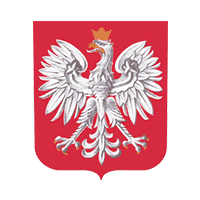Zbigniew RAWICKI, Adam BOROWIEC, Tomasz SOŁTYSIAK
The development of explosives' technology allows their use for civilians, including the mining industry. In 2019, 46.71 million kg of explosives were used in the Polish mining industry, of which more than half (25.5 million kg) were used in opencast mines. From 1990 to the end of 2019, the consumption of emulsion explosives and the use of non-electric initiation systems were continuously increasing. The development of these technologies and the experience of people associated with blasting works allow for their more effective and safer use. However, the accidents related to blasting works still occur. During the analyzed period, there were 92 such accidents, in which there were 22 (out of 170) death victims. Most of the situations resulted from the so-called "human factor", mainly due to the time pressure and the failure to fulfill some basic obligations. Over 90% of the injured people were employed in underground mining plants, which indicates an increased risk in this type of mines. Despite the best security and controls, the risk of theft, loss or destruction of explosives also cannot be fully eliminated. The article describes three such events in Polish mines.
Kamil DŁUGOSZ, Darosław KUBIAK, Grzegorz KULCZYK, Sebastian RAKOWIECKI
In 1997, KGHM Polska Miedź S.A. established a mining rescue unit (JRGH) on the basis of the district mine rescue station and factory fire brigades. The scope of its activities includes mining, chemical, ecological, technical and fire rescue. The unit provides rescue assistance for all plants/branches forming the KGHM Polska Miedź S.A. Capital Group. The structure of Rescue Unit consists of 3 departments: I - Fire Brigade at Huta Miedzi "Głogów", II - Fire Brigade operating at ZG "Lubin" shafts (with a branch at Huta Miedzi "Legnica") and III - Mining Rescue Service (GPR) in Sobin. Three specialized emergency rooms were also created in the GPR: for servicing vertical excavations and high-slope excavations, for underwater work and as medical support service. Provided with state of the art, specializd equipment, having completed numerous rescue operations (15 in 2019), the rescue staff proved their professionalism and determination. In addition, they carry out a wide range of preventive work, provide assistance during construction disasters or natural disasters in Poland and abroad (e.g. in Armenia and Turkey). Using their knowledge, skills and experience, despite strong competition, they also rank high at International Mining Rescue Competitions.
Paweł SARWA, Robert MADETKO, Marcin PŁACHTA, Paweł KAWALEC
The paper presents methodology and benefits of modern blast design methods in open pit mines and quarries. Benefiting from synergy given by merging existing technologies provided by different suppliers, like blast design and optimization environment - O-Pitblast or Hole Navigation System, solution for automatized drilling of Epiroc and drones, allows not only improving efficiency of blast works but also increasing occupational health and safety.



